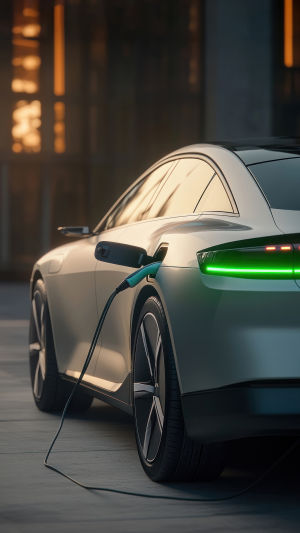Electric vehicles (EVs) have gained massive popularity as the "green" alternative to traditional gasoline cars. Many see EVs as the key to reducing air pollution and fighting climate change.
But is the environmental impact of electric vehicles as positive as it seems? Understanding the full story requires looking beyond just tailpipe emissions to the entire life cycle of these vehicles.
In this article, we'll explore the environmental benefits and challenges of electric vehicles, so you can form a clearer view of how they affect our planet.
<h3>Zero Tailpipe Emissions: A Clear Advantage</h3>
One of the most obvious environmental benefits of EVs is their lack of tailpipe emissions. Unlike combustion engines, electric cars produce no direct carbon dioxide (CO₂), nitrogen oxides (NOx), or particulate matter while driving. This makes them especially attractive in cities where air pollution is a serious health concern.
Switching to EVs can significantly reduce smog and improve air quality, benefiting millions of people worldwide. This benefit alone has driven many governments to encourage EV adoption through subsidies and stricter emission regulations.
<h3>Energy Source Matters: How Green Is the Electricity?</h3>
The environmental friendliness of an EV heavily depends on how the electricity it uses is generated. Charging an EV powered by coal-fired plants results in higher emissions than charging one powered by renewable sources like wind, solar, or hydro.
Countries with cleaner energy grids show more significant reductions in overall greenhouse gas emissions when adopting EVs. For example, in Norway, where most electricity comes from hydropower, EVs contribute dramatically less to carbon emissions than in countries relying on fossil fuels.
<h3>Battery Production: A Resource-Intensive Process</h3>
One environmental challenge of EVs lies in their batteries, mainly lithium-ion types. Battery manufacturing requires mining metals such as lithium, cobalt, and nickel. Mining these materials can lead to habitat destruction, water pollution, and significant energy use.
Moreover, producing batteries emits considerable carbon dioxide before the car even hits the road. Studies estimate that the production emissions of an EV battery can offset some of the operational benefits, especially in regions where electricity generation is not yet clean.
<h3>Battery Recycling and Second Life Applications</h3>
Fortunately, advances in battery recycling are improving the sustainability of EVs. Recycling helps recover valuable metals, reducing the need for new mining and lowering environmental harm.
Additionally, used EV batteries can be repurposed for energy storage in homes or grid applications, extending their useful life and reducing waste. These "second life" uses add value and sustainability to the EV ecosystem.
<h3>Lifecycle Emissions: Comparing EVs to Gasoline Cars</h3>
When considering the entire life cycle—production, use, and disposal—electric vehicles generally have a smaller carbon footprint than traditional cars. Research by the International Energy Agency (IEA) shows that EVs can produce 30-70% fewer emissions over their lifespan depending on the energy mix of the electricity used.
As renewable energy adoption grows and battery technology improves, the lifecycle emissions gap between EVs and gasoline vehicles is expected to widen further in favor of electric cars.
<h3>Other Environmental Considerations</h3>
Electric vehicles also reduce noise pollution, which improves urban living conditions. Additionally, EVs have fewer moving parts, potentially lowering the demand for lubricants and replacement parts, reducing environmental impact during maintenance.
On the other hand, concerns remain about the environmental cost of disposing of batteries and electronic components. Responsible recycling programs and industry standards are essential to addressing these issues sustainably.
<h3>Conclusion: Is Your Next Car Truly Green?</h3>
Electric vehicles offer substantial environmental benefits, especially by eliminating tailpipe pollution and reducing carbon emissions over time. However, their true impact depends on factors like electricity sources, battery production, and end-of-life management.
As consumers and citizens, staying informed and supporting clean energy and recycling initiatives can ensure the rise of electric vehicles leads to a genuinely greener future. What do you think—is the EV revolution the environmental breakthrough we need? Share your thoughts and join the conversation on sustainable driving!





